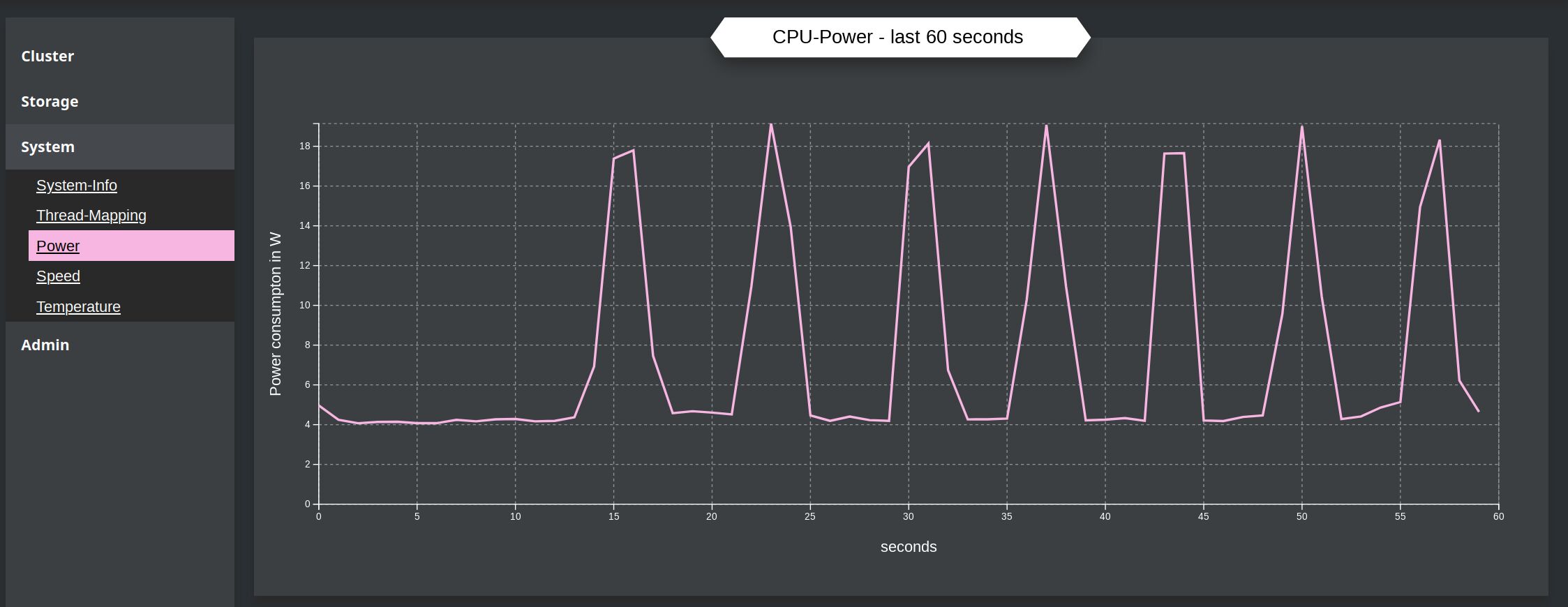Monitoring¶
Their are 4 major tasks to do:
-
optimize the usage of the hardware by supporting CPU-scheduling of all threads of all components
-
read and observe system-information of CPU
Info
Observation of memory, GPU, network and storage comes later.
-
Change CPU-frequency based on the workload
Warning
Disabled at the moment because of less priority
-
measure Power-consumption, thermal output and frequency of the CPU
Info
Power-consumption works only on Intel-cpus currently and only when the program runs as root.
Thread-Binding¶
The only energy-optimization, at least for now, is thread-binding.
Each thread, which is created with the thread-class of the library hanami_common, has a name attached. With this name the thread is accessible over the singleton thread-manager-class and can be accessed from anywhere in the code.
Additionally the thread-class possess the ability to bind the thread to one or more CPU-threads to enforce the location on the CPU, where the thread should be executed.
In the current version this is quite static and simple. Each worker-thread of Hanami, which process the neural network, runs on the CPU-cores >1 and every other thread is executed on the first physical CPU-core. It also identifies in case of hyperthreading, which cpu-threads are sharing the same physical core and consider this, when binding the threads. By enforcing that the 2 threads of the same physical CPU-core are used, instead of 2 threads on two different cores, it can save much energy.
Controlling CPU frequency¶
Warning
Disabled at the moment because of less priority
Hanami can change the frequency of the CPU. It was tested in an earlier state and the result looked like this:

Every spike in the graph means, that a task comes to be processed. Between the task, the cpu is enforced to minimal cpu-frequency and so also minimal power consumption.